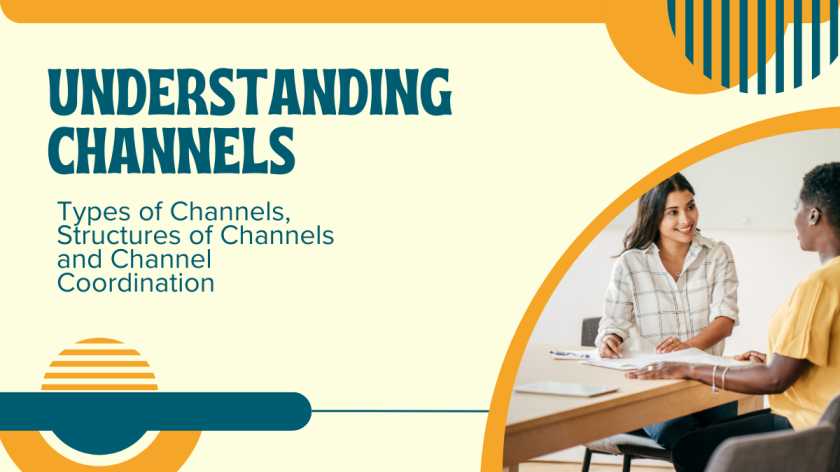Supply Chain Management includes the initial process of manufacturing raw goods to developing them into finished products. Managing supply chains effectively leads to cost-cutting and timely delivery of goods.
Channels facilitate the effective movement of products to consumers.
Understanding basic concepts and a sales & marketing management program can help you escalate your supply chain management career.
In this blog, we will simplify some concepts of a channel and its related transactions.
What is a Channel?
Channel in sales and marketing are the different pathways in which the services and goods are delivered to the end-users. Businesses must make critical decisions considering the revenue generated to choose which channel type is tailor-made for them.
Distribution channels can be direct, indirect, or hybrid. The robust nature and complexity of the structure are directly proportional to the company's costs.
Types of Channels
-
Direct Channel
A direct channel is a medium where businesses supply their products or services directly to consumers without the intervention of intermediaries or third-party vendors. Direct channel is a cost-effective solution where the company can exercise total control over the movement of goods. They have higher profits as there is no revenue distribution between the wholesalers and the company. Start-ups incorporating direct channels as a business strategy have to bear financial risks.
-
Indirect Channel
An Indirect channel is an intermediary to market the products to the end users. An intermediary is not involved in developing the product. The company manufacturing the product has to share a percentage of profits with the third party. The latter is responsible for focusing on other aspects of business, such as logistics. This streamlines the company's focus on introducing new products and services.
-
Hybrid Channel
Hybrid channels incorporate the characteristics of Direct and Indirect channels. The manufacturer takes the aid of an intermediary for distribution purposes but has complete control over the specification of the product. For instance, an e-commerce website may independently produce goods but use third-party vendors' help to reach consumers.
Channel Coordination
Channel coordination (or supply chain coordination) focuses on optimizing channel performance by developing mechanisms that align with the goals and objectives of the company. The examination of this problem and the solution was proposed by Ananta Subramania Kumar in 1992. The key focus lies in inventory management and making the right ordering decisions.
The lack of supply chain coordination gives rise to the following issues:
1) Increase in transport and inventory costs.
2) Bullwhip effect: fluctuations occur as they move above levels from retailers to wholesalers to manufacturers to suppliers. The preliminary challenge for the supply chains is to achieve coordination even with customization and multiple ownership.
IIM L sales & leadership program gives you an edge in finding convertible leads and building sales understanding essential for managing channels.
Channel coordination involves the following steps:
Planning
A concrete plan can prevent businesses and organizations from financial risks. It also helps in fulfilling demands in real time. A well-chalked-out plan for the entire supply chain should be in place. It's essential to introduce timely improvements in making key decisions and refine organizational metrics and technology. An effective planning strategy is one that balances demand and supply to exploit ample revenue sources.
Monitoring
Once a comprehensive plan is outlined, it is essential to constantly monitor the performance to ensure it fulfills the requirements and objectives. Channel monitoring can be achieved by implementing analytics software to monitor the chain of operations. Monitoring can help in increased efficiency of channel coordination. It's also essential to compare the performance of different channel segments. You must define goals and track relevant parameters such as reach, loyalty, and retention.
Communication
Effective communication is essential for channel coordination. Performance updates, as well as information sharing on significant changes that might impact the supply chain. It ensures that all stakeholders are aligned toward a common goal and that business expectations are met. Effective communication between the stakeholders streamlines the entire process.
Collaboration
Collaboration between different supply chain steps is vital so that everyone works towards common goals. This may involve activities such as decision-making and problem-solving. You need to establish clarity with stakeholders through meetings, regular feedback sessions, and reports.
Structure of a Channel
Businesses can utilize intermediaries to distribute goods or market products to the consumer. The structure of channels depends on the number of intermediaries.
Zero Level
The production department of the businesses markets the products directly to the end users. Significant capital has to be dedicated to making this channel structure efficient, as there are no third-party vendors for the distribution of goods.
One Level
One intermediary acts as the link between the producer and the consumer. The businesses supply the goods to the retailer, who delivers them to the customers. The essential advantage is that the end users can get many offers and customization options.
Two Level
The transfer of goods from the producer to the consumer occurs through two intermediaries. The businesses sell the goods to the wholesalers, who buy them from the retailers. The two-level channel has the capability of covering a large area in comparison to one level.
Three Level
Corporations make use of a three-level distribution structure at a global level. When they expand their businesses in another country, it's beneficial for them to take the help of agents in that particular country. The agents are well-versed in legal procedures and can come into the picture in case of a product recall or represent the company in legal battles.
Conclusion
Channels play an essential role in the smooth functioning of businesses for ensuring that the products reach the end users safely and effectively. Companies should evaluate which channel best fits them according to the product specification, market audience, cost of manufacturing, and demographic.
Imarticus Learning offers an Executive Management Programme In Sales & Marketing Leadership with IIM Lucknow. IIM L sales & leadership program is designed for aspiring business managers who aim to drive organizational success. Follow the website for more insights and get certified.








